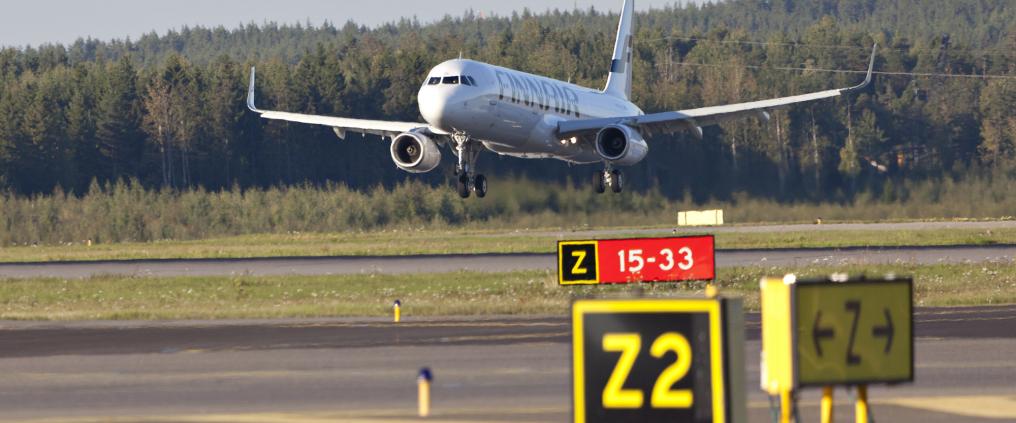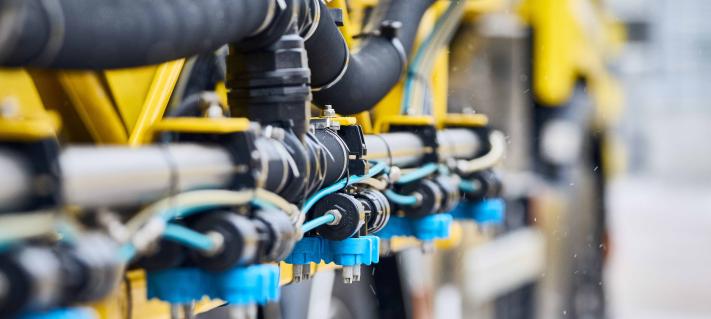The aim of the renovation was to ensure safe aircraft operation. Finavia replaced the runway’s pavement layers, rainwater drainage and lighting system.
The investments totaled approximately EUR 13 million, 20 per cent of which was allocated to improving the infrastructure. This has major environmental impacts— for example, the renovated rainwater drainage system improves waste water management at the airport.
– We also made notable changes to the lighting system. The new runway lights use energy-efficient LED technology, says Henri Hansson, Technical Director at Finavia.
According to Hansson, the construction and maintenance of the runway require extensive expertise and investment.
– The runway is paved with a 20-cm surface layer and compressed stone structures that are designed to withhold the load of the aircraft. The surface of the runway must be level, but it may not accumulate water. Furthermore, there must be sufficient friction, he says.
Finavia paves its runways with asphalt, and the paving of runway 2 required 2,500 truckfuls or 60,000 tonnes of asphalt. Concrete is another possible surface material, but it would be too short-lived and difficult to maintain in the Finnish winter.
Over the last couple of years, Finavia has invested a total of EUR 60 million in the renovation of five runways. Two runways at Helsinki Airport were renovated in 2015 and 2017. The runways of the airports in Kittilä, Rovaniemi and Oulu have also been fully renovated.
The renovated area at Helsinki Airport was approximately 138,000 square metres, which equals the size of 20 football fields. Operations on the new runway will start on 9 October 2017.
Areas affected by aircraft noise will return to normal after the renovation
The amount of aircraft noise in Nurmijärvi will return to normal when the primary landing runway is taken into use again after the four-month renovation.
On the other hand, there will be less aircraft noise in Järvenpää, Tuusula and Kerava.
The selection of the runway is always based on wind direction: it is safest to take off upwind. Helsinki Airport also uses a runway priority system that seeks to direct the noise to the most sparsely populated areas.
The primary runway for takeoffs is runway 3 to the south west direction. Most of the aircraft land on runway 2 from the north west. At peak hours, aircraft also land on runways 1 and 3.
Finavia is a pioneer in the implementation of the green approach to landing. The green approach uses a so-called glide on a steady path method, which reduces noise and emissions compared to traditional descent. Up to 70 per cent of day-time descents and 80 per cent of night-time descents at Helsinki Airport use the greener steady glide approach.
Facts about the renovation of runway 2
- Renovated runway area 138,000 sqm
- 173 rainwater gullies
- 5 km of rainwater drainage, 4.5 km of subsurface drainage
- 30 km of cable tubing
- 60,000 tonnes of asphalt
Background information on the numbering of runways
Runways are numbered according to a global system that is based on compass degrees.
The compass degree of runway 2 at Helsinki Airport is approximately 150, which means one of its identification numbers is 15. Because the runway can be used in both directions, each direction must have its own number. The other direction is 180 degrees larger. In the case of runway 2, it is 15+18=33. The number of the runway is a combination of these figures: 15/33.
If an airport has two parallel runways, these are separated by adding the letter L (left) or R (right) to the number. At Helsinki Airport, the two parallel runways are known as 04R/22L (runway 1) and 04L/22R (runway 3).



